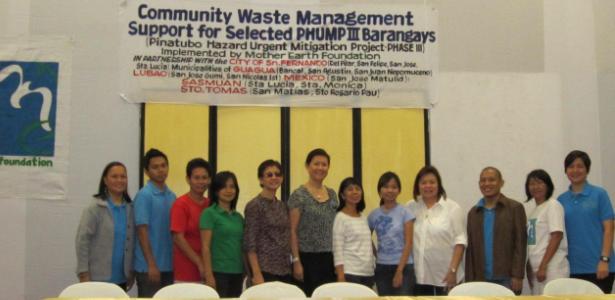The EcoWaste Coalition, an advocate for children’s health and safety from harmful chemicals, welcomed the plan of the Department of Health (DOH) to conduct its own probe on wooden toys that were tested with high levels of lead, a neurotoxin.
Reacting to the EcoWaste Coalition’s toxic toy investigation, the DOH last Thursday told the EcoWaste Coalition they will get samples of the lead-tainted toys and have them analyzed for lead.
"If a toy tested positive with high levels of lead, we will issue a letter to the toy manufacturer or distributor for them to recall the said product," said Engr. Renato Ongkoy, Division Head of the DOH's Center for Device Regulation, Radiation Health and Research as he assured the group of the department's commitment to protect children from lead exposure.
“We welcome this pronouncement made by the DOH. As a precautionary action, we further urge our health authorities to immediately stop the sale of the lead-tainted toys until a new analysis has proven them safe for children 12 years and under,” said Roy Alvarez, EcoWaste Coalition president.
Last Tuesday, the EcoWaste Coalition revealed that six of the 11 imported and locally produced toys that it bought from registered shops and sent to the University of Cincinnati in Ohio, USA, for laboratory analysis using atomic absorption spectroscopy were found to contain elevated quantities of lead.
One sample, a colorful nautilus puzzle made by a Cebu-based toy manufacturer had lead levels between 6,039 to 45,671 parts per million (ppm), which is way above the 90 ppm "maximum allowable total lead content" for children's products under the US Consumer Product Safety Improvement Act of 2008.
The other toy samples with parts loaded with lead include a wooden ornamental pin with one part containing up to 20,740 ppm lead; a tractor with wagon with lead concentrations between 2,055 and 11,764 ppm; another pin with two parts having 4,101 and 4,888 ppm lead; a “learn to count” puzzle with lead levels up to 152 ppm; and a barnyard puzzle with one part having 95 ppm lead.
Toxicologist Dr. Bessie Antonio of the East Avenue Medical Center, who spoke at the launch of the test results, identified a range of health problems linked with children’s exposure to lead such as the damage to the brain and the nervous system.
Other problems associated with lead poisoning include speech and language handicaps and other developmental delays, low intelligence quotient and other learning disabilities and disorders, attention deficit disorder and other behavioral problems, reduced bone and muscle growth, etc.
Reacting to the EcoWaste Coalition’s toxic toy investigation, the DOH last Thursday told the EcoWaste Coalition they will get samples of the lead-tainted toys and have them analyzed for lead.
"If a toy tested positive with high levels of lead, we will issue a letter to the toy manufacturer or distributor for them to recall the said product," said Engr. Renato Ongkoy, Division Head of the DOH's Center for Device Regulation, Radiation Health and Research as he assured the group of the department's commitment to protect children from lead exposure.
“We welcome this pronouncement made by the DOH. As a precautionary action, we further urge our health authorities to immediately stop the sale of the lead-tainted toys until a new analysis has proven them safe for children 12 years and under,” said Roy Alvarez, EcoWaste Coalition president.
Last Tuesday, the EcoWaste Coalition revealed that six of the 11 imported and locally produced toys that it bought from registered shops and sent to the University of Cincinnati in Ohio, USA, for laboratory analysis using atomic absorption spectroscopy were found to contain elevated quantities of lead.
One sample, a colorful nautilus puzzle made by a Cebu-based toy manufacturer had lead levels between 6,039 to 45,671 parts per million (ppm), which is way above the 90 ppm "maximum allowable total lead content" for children's products under the US Consumer Product Safety Improvement Act of 2008.
The other toy samples with parts loaded with lead include a wooden ornamental pin with one part containing up to 20,740 ppm lead; a tractor with wagon with lead concentrations between 2,055 and 11,764 ppm; another pin with two parts having 4,101 and 4,888 ppm lead; a “learn to count” puzzle with lead levels up to 152 ppm; and a barnyard puzzle with one part having 95 ppm lead.
Toxicologist Dr. Bessie Antonio of the East Avenue Medical Center, who spoke at the launch of the test results, identified a range of health problems linked with children’s exposure to lead such as the damage to the brain and the nervous system.
Other problems associated with lead poisoning include speech and language handicaps and other developmental delays, low intelligence quotient and other learning disabilities and disorders, attention deficit disorder and other behavioral problems, reduced bone and muscle growth, etc.




